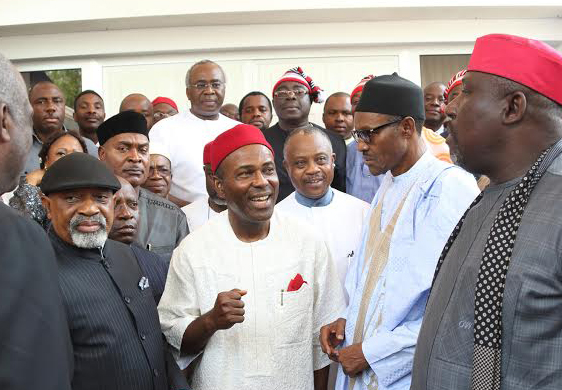Global Markets: Markets are waking up to further signs of economic weakness in China following another PMI contraction overnight. While it is true that expectations were for a contraction anyway, the data just provided further confirmation that economic momentum is slowing down in China with the economy looking further exposed and increasingly vulnerable to dropping below Beijing’s 7% GDP before the end of the current quarter.
The chances of GDP growth falling below the government’s target are actually intensifying each time an economic announcement is released from China, mainly because all data is consistently pointing towards the economic momentum declining in this major economy.
What does the data mean for the PBoC? The central bank are going to remain under intense pressure to continue reinvigorating economic momentum with this including the heightened possibility of more interest rate cuts, loans available for banks and probably further Yuan devaluation. Market participants should make no mistake at all, the government GDP target at 7% is absolutely critical, and the PBoC will do whatever it takes to limit the probability and increasing threat of this target being missed.
What is the threat to the global economy with China slowing down? The greatest risk is that exports and basically trade relations with China are set to decline. As peculiar as this might sound, China can actually handle slower economic growth because the economy is in a transitional stage where it is trying to diversify from any particular sector and build a domestic reliance. The problem with this is that those economies which are so dependent on trade with China will have to handle the fall-out from this, which ultimately will mean less trade from China.
Advertisement
RBA and Australia
Despite the Reserve Bank of Australia (RBA) leaving interest rates unchanged once again overnight, the AUDUSD is remaining under pressure. It is noteworthy that the central bank are refraining from talking down their currency on such a regular basis, and I think that the major reason behind this is because the central bank is fully aware that their currency will decline anyway with the China risks continuing.
Australia is a major trading partner with China, meaning that the Australian economy is naturally going to face downside pressures with the China economy continuing to show weakness. The positive news for Australia is that the RBA’s interest rate cuts earlier this year are showing signs of improving domestic data with a combination of retail sales, construction output and other releases coming in above expectations recently.
Advertisement
GBPUSD & FTSE
After suffering a completely unexpected and sudden reversal that saw the GBPUSD dramatically tumble from two-month highs towards near two-month lows within three days, the GBPUSD is trying to find some stability. The comments from BoE Governor over the weekend that the UK economy is somewhat protected from global shocks was a likely attempt to raise investor sentiment towards the Pound and UK markets, while also preventing the FTSE from further losses.
Speaking of Carney, it’s quite clear that he would like to begin raising UK interest rates and there is still optimism that this can begin early next year. While the recent above expectations core inflation readings and further economic improvements will encourage further calls to begin raising UK interest rates, I think it’s probable that the ECB are going to at least threaten further monetary easing, and this might encourage reluctance from the BoE because the interest rate differentials would encourage further downside movement in the EURGBP.
In the meantime, what investors really need to be keeping an eye on is the 200 MA because the GBPUSD is still looking technically vulnerable to further losses and it is the 200 MA that is protecting the pair right now. If the GBPUSD slips below the 200 MA, the UK’s consistently strong economic outlook might not be taken into consideration for some time and the pair will be vulnerable to further losses.
Advertisement
Emerging Markets
It shouldn’t be understated how pivotal the recent rally in WTI will be towards allowing the emerging market currencies to recover what were brutal losses throughout the summer months. The sharp bounce in commodities like WTI will allow some of these emerging market currencies to begin recovering sharp losses, and I would at least expect the currencies with economies linked to commodity exports to begin noticing an improvement in investor sentiment.
Bearing in mind that it was the Malaysian Ringgit that was punished the most throughout the late summer months, I would expect this to also be the currency which benefits and welcomes an opportunity to recover losses. In the longer term there are still risks ahead such as the fallout of declined China trade and increased inflation pressures, but WTI continuing to rally will at least allow the USDMYR to target 4.15.
The Indonesian economy is heavily reliant on commodity exports, so I would naturally also expect the sentiment towards both the Indonesian markets and Rupiah to improve following the sharp gains in WTI. Indonesia is still at risk to further downside pressures when you take into account that GDP forecasts are already missing expectations and that China is a major trading partner for Indonesia, however the improved investor appetite for oil still represents a welcome opportunity for the Rupiah to recover some losses.
Advertisement
While the Indian economy is far more protected than other emerging markets when it comes to downside pressures and is actually impressing investors when it comes to its economic performance in 2015, the Indian Rupee still hit a fresh two-year low above 66 against the USD last week. While the sentiment towards the Indian economy is robust when compared to others in the emerging market region, it is the threat from the central bank that it might not yet have concluded monetary easing, despite already acting on more than one occasion this year, that is restricting the currency from recovering losses.
With the USD recovering most of its momentum following the sudden losses on Black Monday, the UAE Dirham is showing signs of strength. The possibility of the Dirham peg to the USD being released has become a topic following the Yuan devaluation but I see very limited chances of this occurring. The UAE economy will face some downside pressures with the lower commodity prices, as you would expect from a major oil exporter, however the economy remains robust and the recent news that non-oil trade has passed Dh270bn shows that the economy is diversifying from any one major source of GDP.
Advertisement
Follow Jameel on Twitter @Jameel_FXTM
For more information please visit: ForexTime
Advertisement
Add a comment






